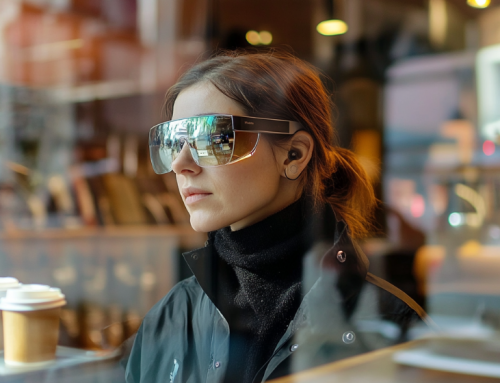
The Blindsight device works by implanting a microelectrode array into the brain’s visual cortex, which activates neurons based on visual input from an external camera. (Source: Image by RR)
Blindsight Implant Offers Hope to Blind Patients, but Challenges in Realistic Vision Remain
Neuralink, Elon Musk’s brain-chip startup, has announced that its experimental vision-restoring implant, Blindsight, has received the FDA’s prestigious “breakthrough device” designation. This status is granted to medical technologies that aim to treat serious conditions and can potentially accelerate their approval process. Blindsight is designed to help individuals who have lost their vision, even those without functioning optic nerves, by using a microelectrode array implanted in the brain’s visual cortex to create artificial sight from input gathered by an external camera.
Despite Musk’s enthusiasm, Blindsight faces significant challenges in achieving realistic vision, particularly for those who have been blind from birth. While Neuralink plans to increase the number of electrodes in the implant to improve visual clarity, current technology still limits the vividness of the images. As noted in interestingengineering.com, critics also point out that individuals who were born blind may struggle to interpret the new signals, as their brains may lack the pathways to process visual information, raising questions about how much vision the device can realistically restore.
Experts remain cautious about the potential of Blindsight, especially for curing blindness. Vision restoration involves more than detecting light—it requires recreating depth, detail, and color, which is far more complex than merely connecting a camera to the brain. Additionally, Musk’s claim that the restored vision might resemble “Atari graphics” downplays the cognitive difficulties involved in adjusting to such brain implants, particularly for those who have never experienced sight.
While challenges remain, Neuralink’s work in brain-computer interfaces is still groundbreaking. The FDA’s breakthrough designation for Blindsight indicates that the technology holds considerable promise for future blindness treatments. The company has also made significant progress in developing other implants, such as one designed to help paralyzed individuals control digital devices using their minds. However, Blindsight is still in its early stages, and further trials and tests will be needed over the next few years to assess its effectiveness and safety before broader clinical application is possible.
read more in interestingengineering.com







Leave A Comment